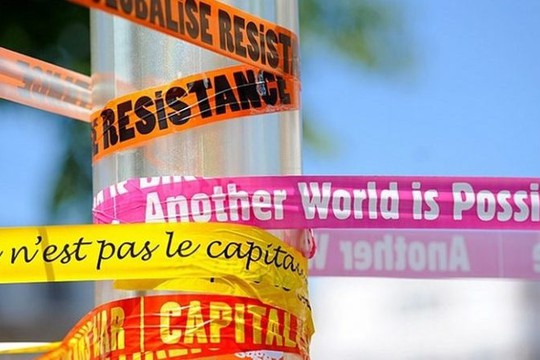The year 2020 marked parity between the total GDP of the G7 (the U.S. plus allies) and the total GDP of the BRICS group (China plus allies). Since then, the BRICS economies grew faster than the G7 economies, writes Richard Wolff, an author of ‘Capitalism Hits the Fan’ and ‘Capitalism’s Crisis Deepens’.
Now a third of total world output comes from the BRICS countries while the G7 accounts for below 30 percent. Beyond the obvious symbolism, this difference entails real political, cultural, and economic consequences.
The evident failure of the economic sanctions war against Russia offers yet more evidence of the relative strength of the BRICS alliance.
That alliance now can and does offer nations alternatives to accommodating the demands and pressures of the once-hegemonic G7. The latter’s efforts to isolate Russia seem to have boomeranged and exposed instead the relative isolation of the G7. Even France’s Macron wondered out loud whether France might be betting on the wrong horse in that G7 vs. BRICS economic race just under the surface of the Ukraine war. Perhaps earlier, less-developed precursors of that race influenced failed U.S. land wars in Asia from Korea through Vietnam to Afghanistan and Iraq.
China increasingly competes openly with the United States and its international lending allies (the IMF and the World Bank) in development loans to the Global South. The G7 attack the Chinese, charging them with replicating the predatory lending for which G7 colonialism was and G7 neocolonialism is justly infamous. The attacks have had little effect given the needs for such borrowing that drive the welcome offered to China’s loan policies.
De-dollarization represents yet another dimension of the now rapid realignments in the world economy. Since 2000, the proportion of central banks’ currency reserves held in U.S. dollars has fallen by half. That decline continues. Every week brings news of countries cutting trade and investment payments in U.S. dollars in favor of payments in their own currencies or other currencies than the U.S. dollar.
Saudi Arabia is closing down the petrodollar system that crucially supported the U.S. dollar as the pre-eminent global currency.
Reduced global reliance on the U.S. dollar also reduces dollars available for loans to the U.S. government to finance its borrowings.
The long-term effects of that, especially as the U.S. government runs immense budget deficits, will likely be significant.
China and BRICS countries have replaced the United States as the champion of continuing a broadly defined global free trade and capital movements regime. Defusing conflicts, especially in the contentious Middle East, enables China to promote the peaceful world economy in which it prospered.
In contrast, the economic nationalism (trade wars, tariff policies, targeted sanctions, etc.) pursued by Trump and Biden has struck China as a threat and a danger. In reaction, China has been able to mobilize many other nations to resist and oppose United States and G7 policies in various global forums.
The source of China’s remarkable economic growth — and the key to BRICS countries’ now successful challenge to the G7’s global economic dominance — has been its hybrid economic model.
China broke from the Soviet model by not organizing industry as primarily state-owned-and-operated enterprises. It broke from the U.S. model by not organizing industries as privately owned and operated enterprises.
Instead, it organized a hybrid combining both state and private enterprises under the political supervision and ultimate control of the Chinese Communist Party. This hybrid macroeconomic structure enabled China’s economic growth to outperform both the USSR and the United States. China constructed is a hybrid state-plus-private capitalism run by a communist party.
China has become the first systemic and global competitor that the United States has had to face in the last century.
The United States also faces two key questions.
First, how much longer will most U.S. leaders persist in denying its economic and global declines, acting as if the U.S. position had not changed since the 1970s and 1980s?
Second, how can such leaders’ behavior be explained when large American majorities acknowledge those declines as ongoing long-term trends?
A Pew Research Center random poll taken among Americans between March 27 and April 2, 2023, asked what they expected the situation of the United States to be in 2050 compared with today.
- Some 66 percent expect the U.S. economy will be weaker.
- 71 percent expect the United States will be less important in the world.
- 77 percent expect the United States will be more politically divided.
- 81 percent expect the gap between rich and poor will grow.
The people clearly sense what their leaders desperately deny.
That difference haunts U.S. politics.
read more in our Telegram-channel https://t.me/The_International_Affairs

 9:32 12.06.2023 •
9:32 12.06.2023 •























